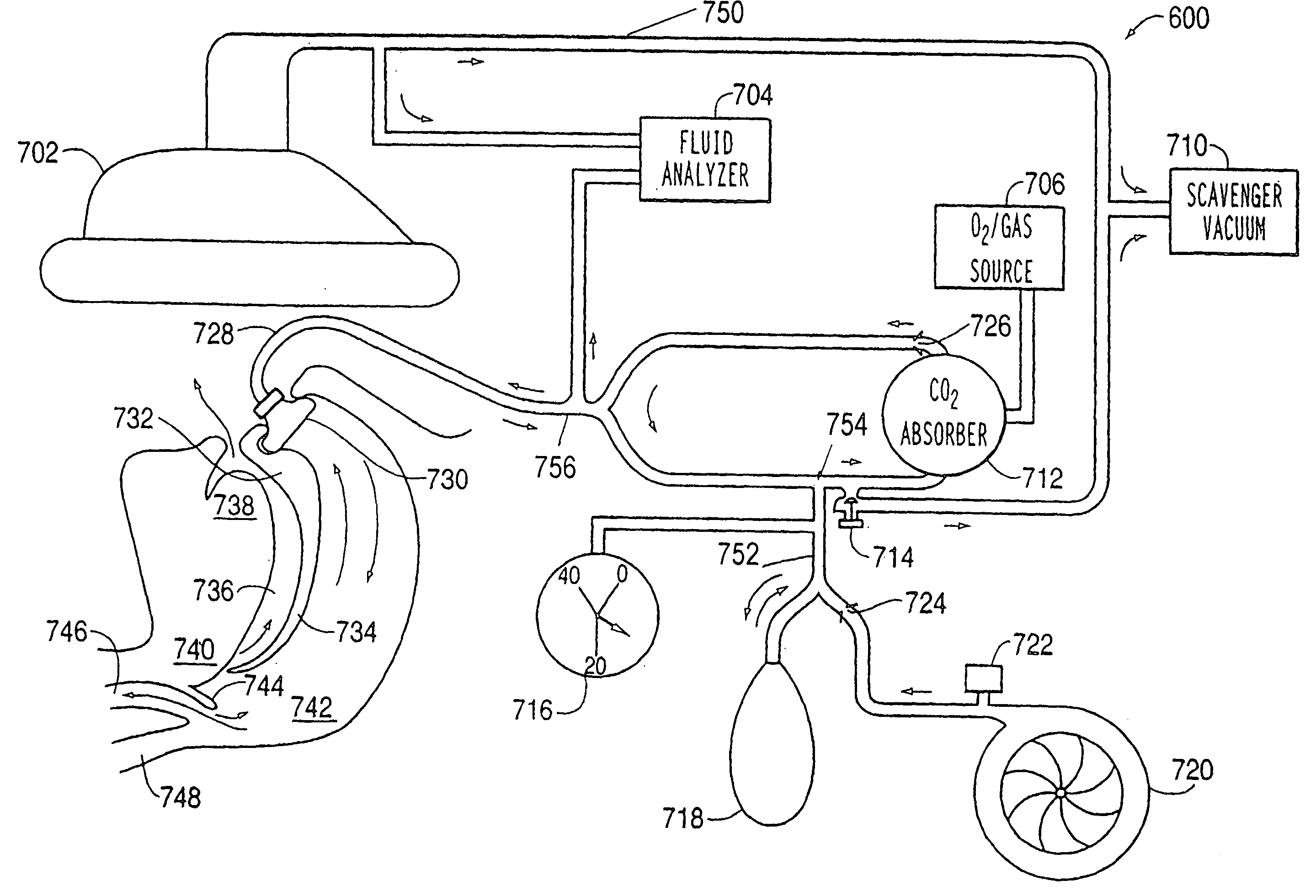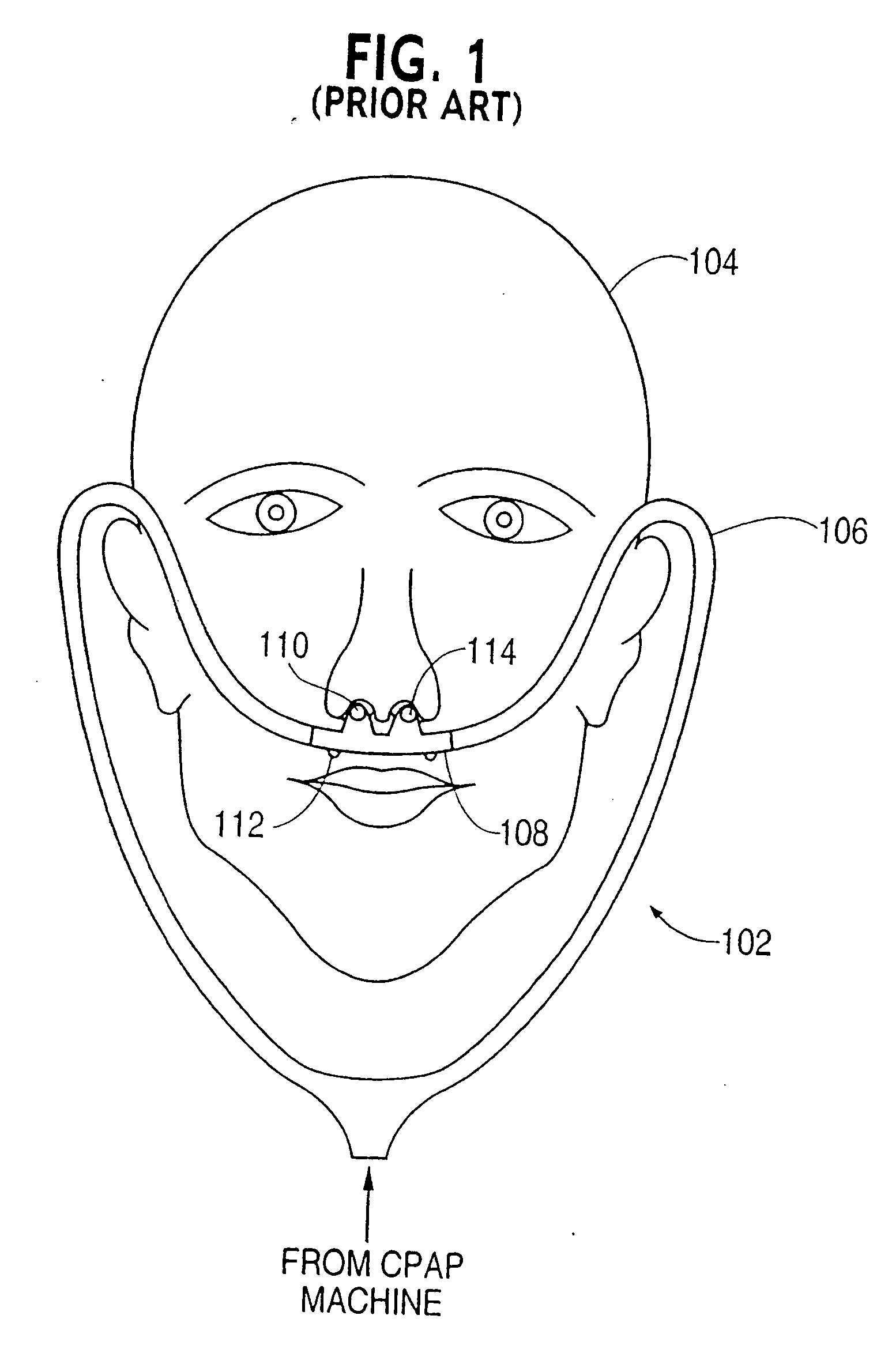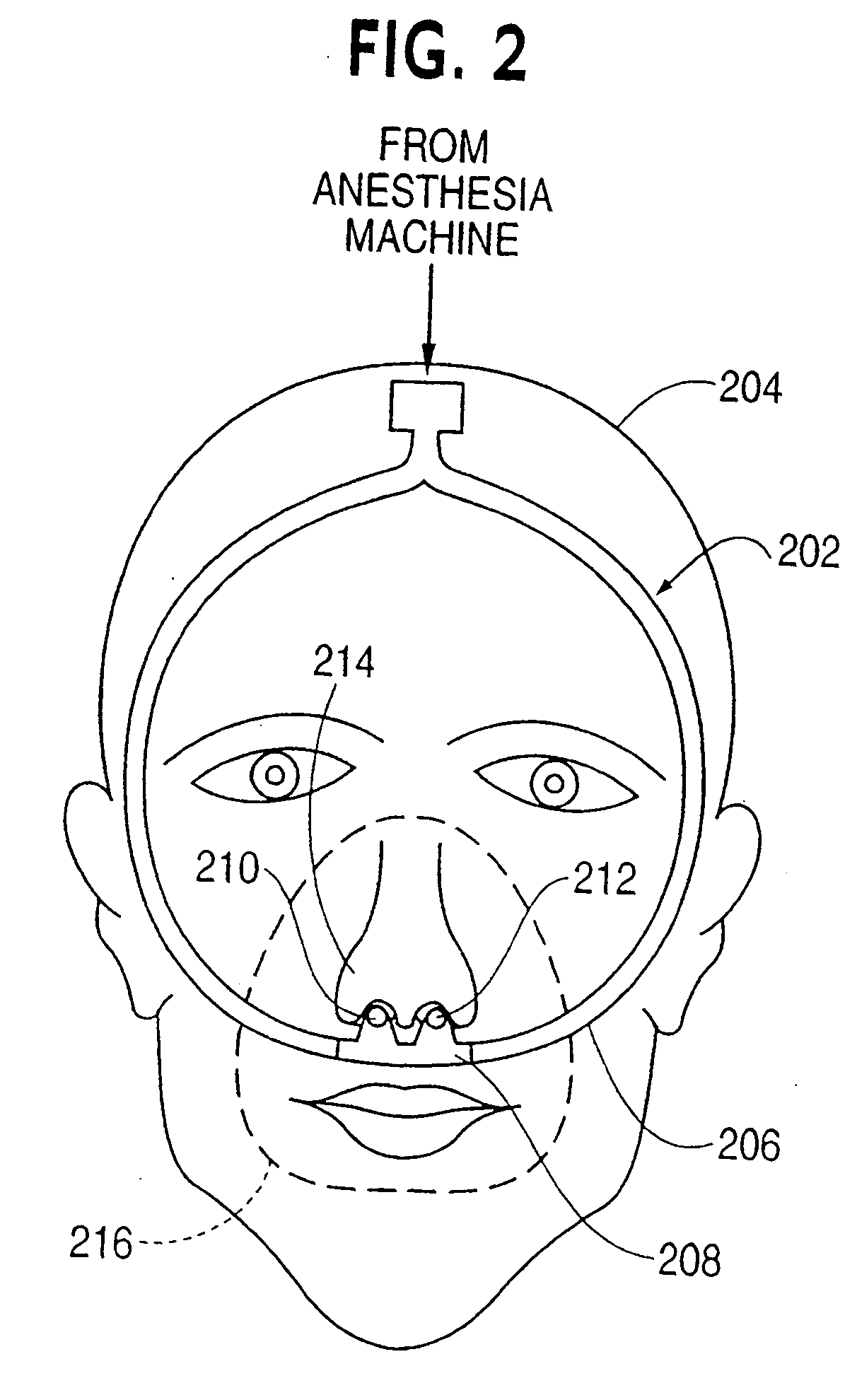Nasal gas delivery system and method for use thereof
a gas delivery system and gas delivery technology, applied in the field of gas delivery apparatus, can solve the problems of reflex constriction of blood vessels, disastrous consequences of immediate and/or long-term, and disastrous consequences of immediate and/or long-term, and achieve the effect of convenient and continuous operation of a c-pap machin
- Summary
- Abstract
- Description
- Claims
- Application Information
AI Technical Summary
Benefits of technology
Problems solved by technology
Method used
Image
Examples
Embodiment Construction
[0145] The following is a description of an exemplary method of and apparatus for enabling a patient to adequately respire at surgical levels of anesthesia without an invasive airway and manual or mechanized ventilation in accordance with the present invention.
[0146] During a pre-operative interview the patient is asked to confirm that he can breathe in and out through his nose.
[0147] The patient is then taken into the operating room and assisted in voluntarily positioning himself to comfort as appropriate through the anesthesia plan for facilitating the surgical intervention. Supine is the usual starting position for positions requiring intubation of the trachea. However, for superficial procedures in which the patient can be allowed to breath spontaneously, the patient can often be positioned awake and to comfort in the prone or lateral positions before induction of anesthesia. The airway, more often than not, is more easily maintained in these positions than in the supine posit...
PUM
 Login to View More
Login to View More Abstract
Description
Claims
Application Information
 Login to View More
Login to View More - R&D
- Intellectual Property
- Life Sciences
- Materials
- Tech Scout
- Unparalleled Data Quality
- Higher Quality Content
- 60% Fewer Hallucinations
Browse by: Latest US Patents, China's latest patents, Technical Efficacy Thesaurus, Application Domain, Technology Topic, Popular Technical Reports.
© 2025 PatSnap. All rights reserved.Legal|Privacy policy|Modern Slavery Act Transparency Statement|Sitemap|About US| Contact US: help@patsnap.com



